A web browser, also called an Internet browser or simply a “browser”, is a computer program that allows you to access the World Wide Web (www) and view pages from websites all over the Internet.
A web page or hypertext document is created using the HTML markup language, the CSS styling language, and the JavaScript programming language. The web browser is the application that requests, receives and interprets the code of the web page, in addition to loading other resources such as images, fonts, sounds or videos and displays the content on the screen, allowing the user to interact with the page and thus way to navigate it on the internet.
The browser communicates with servers using the HTTP protocol, thus allowing users to move or navigate through the web using addresses (URLs) or links between pages (hyperlinks).
Hyperlinks allow users to follow a path to other pages or sites on the web. Each web page, image and video has its own Uniform Resource Locator (URL), which is also known as a web address. When a browser visits a server for data, the web address tells the browser where to look for each element that is described in the HTML, and with this information it constructs what we see, hear and experience while browsing the Internet.
History of web browsers
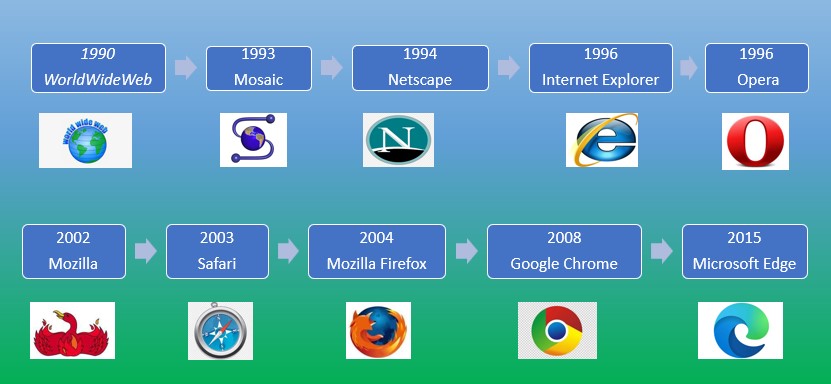
The first browser was developed by Tim Berners-Lee, at CERN, in 1990, it was called WorldWideWeb.
The Mosaic browser, created in 1993, initially worked in Unix environments on XFree86 (X11), and was the first to be extended because the National Center for Supercomputing Applications (NCSA) prepared versions for Windows and Macintosh.
Although the Mosaic browser itself eventually disappeared, its original creators developed the project further and Mosaic became Netscape Navigator.
In 1994 Netscape Navigator entered the market and quickly surpassed Mosaic in capabilities and speed. Its main advantage was to work on almost all Unix systems, and also in Windows environments.
Internet Explorer, launched on the market in 1996 (previously Spyglass Mosaic) was Microsoft‘s late bet to enter the market and managed to displace Netscape Navigator among Windows users, due to the integration of the browser with the operating system, coming to have about 95% of the market share.
Because of this, Netscape Communications Corporation released the source code of its browser, thus giving birth to the Mozilla project.
Finally, Mozilla (Mozilla Application Suite) was rewritten from scratch after deciding to develop and use as a base a new set of cross-platform widgets based on Extensible Markup Language (XML) called XUL, appearing a high-quality version 1.0 for many platforms available. time on June 5, 2002.
On January 7, 2003, Apple launched the Safari web browser. This browser takes almost the entire Mac microcomputer market, due to its speed and large number of updates. Likewise, it also enters the Windows operating system market.
At the end of 2004, Mozilla Firefox appeared on the market, a development branch of Mozilla that aims to take over part of the Internet Explorer market.
On September 2, 2008, Google Chrome appears on the market. It is the web browser developed by Google and compiled based on open source components such as the WebKit rendering engine and its application development structure (framework). It’s available for free under specific service conditions. The name of the browser is derived from the term used for the graphical user interface framework (“chrome”). In December 2011, Chrome surpassed Internet Explorer 8.0 as the most used browser worldwide.
On July 29, 2015, Microsoft launches Microsoft Edge as a successor to Internet Explorer. It is an improved, modernized and different version of Internet Explorer with an independent development line. The browser is available for iOS, Android 4.4+ and Windows 10 (PC, Mobile, Xbox One, HoloLens). It has several unique features, such as integrated ebook reading, adding web notes with Windows Ink, and Continue on PC, a tool where you can continue web browsing and synchronization between your PC and the device. phone. In 2020, Microsoft rebuilt Microsoft Edge, now under Chromium, which has been more widely accepted by users.
When we open a browser, it offers us a series of options, taking into account its structure.

- Navigation buttons
Next to the address bar, there are several buttons to its left and right. On the left side, the arrows represent the forward and backward buttons, which will take you to the previous web page you were viewing or advance to the page you were viewing before going back. These navigation arrows are grayed out if a specific action cannot be performed.
The third button changes depending on whether a page is loading or has already loaded. If the page is loading, you will see an X. Click this button to stop loading the current page (this is useful if you don’t want to wait for all elements on the page to load). If you see a circular arrow, click it to refresh the page. For Mac users, in Safari the refresh button is on the right.
- 2. Search/address bar
At the top of the web browser window you will see a long text bar. This is the address (or search) bar, where you can type the address (URL) of a web page (for example, google.com). Here you can also enter search terms so that the browser searches the Internet using the default search engine.
3. Favorites, downloads, installed extensions and profile
Most web browsers also include a bookmarks bar so you can save URLs you want to visit later, download options, and options to view and clear your browsing history (the list or collection of all the web pages you’ve visited with that browser). You can also add different features, called extensions or plugins, to improve the browsing experience. Then there is access to your profile, or the option to authenticate yourself. Finally, a button to see more browser options.
- 4. Bookmarks bar
The bookmarks bar is used to organize the sites we access the most, those whose URLs we do not want to lose. They can be organized in folders or placed directly on the bar.
- 5. Upper right buttons
On the upper right side are the buttons to minimize, maximize, restore and close the window. Click the minimize button to send the page to the bottom of the screen and stop displaying it. The maximize button makes the window fill the computer screen or, if the window was already maximized, reduces its size to show part of the desktop background. The close button closes the window, including any open tabs.
Below are some of the characteristics of the most used web browsers today according to StatCounter in May/2023.
Most used web browsers 2023 according to StatCounter
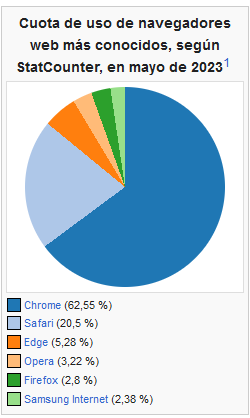
Google Chrome
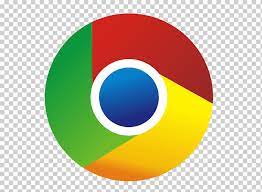
Google Chrome is a proprietary web browser developed by Google and compiled based on open source components (Chromium project). Currently, it is the most popular web browser. Chrome’s popularity is partly explained by its high browsing speeds and easy integration with your personal Google account, making it the most convenient browser for most. In addition, with the largest catalog of extensions of the main browsers, Chrome is also an extremely easy browser to modify and customize. It is freely available for various platforms (Windows, MacOS, Android, iOS, Linux…). Google Chrome is fully compatible with HTML5 and CSS3 standards.
Safari
Safari is a closed-source web browser developed by Apple Inc. It is available for Mac OS X, iOS (the system used by the iPhone, iPod Touch, and iPad), and Microsoft Windows. Although many people do not have Mac computers, many have iPhone and iPad devices. By the way, Safari is the most popular mobile web browser in the U.S. While using a computer obviously offers a different experience than a mobile device, the look and feel of Safari is the same on all Apple devices. Safari fully supports HTML5 and CSS3 standards.

Microsoft Edge
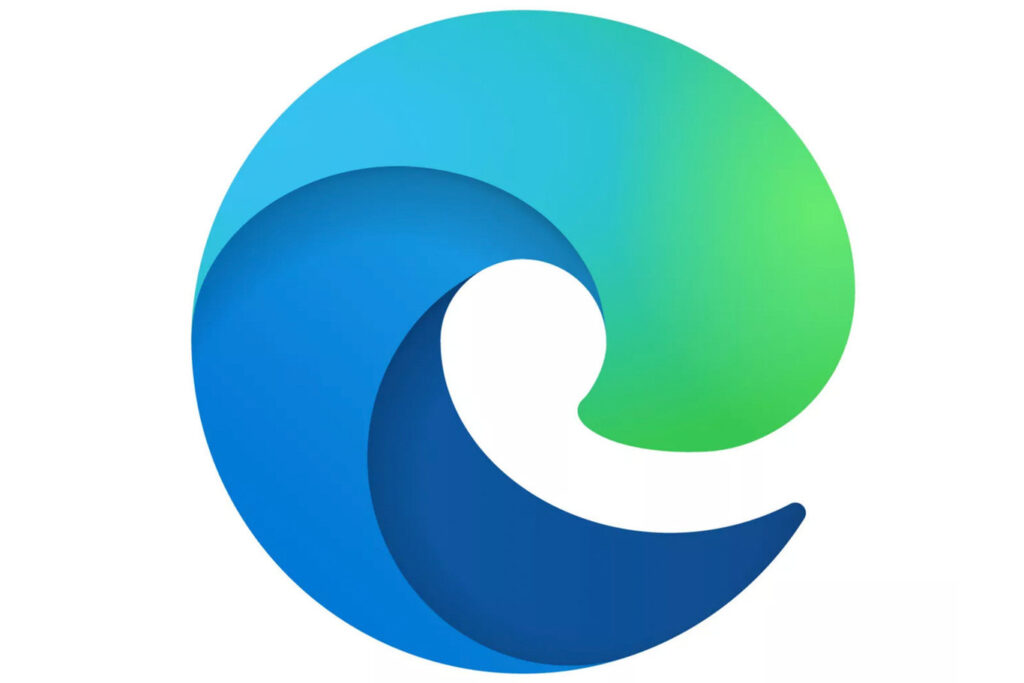
Replacing the old and outdated Internet Explorer, Microsoft Edge is Microsoft’s new flagship browser, included on any device that uses Microsoft’s Windows operating system starting with Windows 10. It is built on the Chromium browser platform, which is also the base of Chrome and other browsers. In addition to Windows, there are versions of Edge for Android and iOS. Edge supports HTML5 and CSS3 standards.
Opera
Opera is a web browser and Internet suite created by the Norwegian company Opera Software, capable of performing multiple tasks such as browsing websites, managing email, contacts, web feeds, chatting via IRC and functioning as a BitTorrent client. It works on a wide variety of operating systems, including Microsoft Windows, MacOS, Android, iOS, GNU/Linux and FreeBSD. Opera fully supports HTML5 and CSS3. Although it has never been the most popular browser, Opera has built a stable user base over the years. This is partly due to the browser’s unique features such as the built-in proxy and ad blocker.

Mozilla Firefox

Mozilla Firefox is a free and open source web browser descended from the Mozilla Application Suite and developed by the Mozilla Foundation. Firefox can be used on various operating systems (Windows, MacOS, Android, iOS, Linux…). In addition, it fully supports HTML5 and CSS3 standards. Despite the decline in popularity, Firefox still has a small, loyal user base and offers similar features to its more dominant competition. It includes useful tools for developers, so it is easy for IT and web professionals to inspect and update their web pages for security, privacy and usability.
Samsung Internet
The Samsung Internet application is a simple web browser designed for Samsung smartphones and tablets that is also compatible with other Android™ devices. It offers several functions for accessing Internet content such as the video assistant, the dark mode, the personalized menu, extensions such as the translator, and others aimed at protecting your privacy, such as the secret browsing mode or the functions of Intelligent anti-tracking and protection.
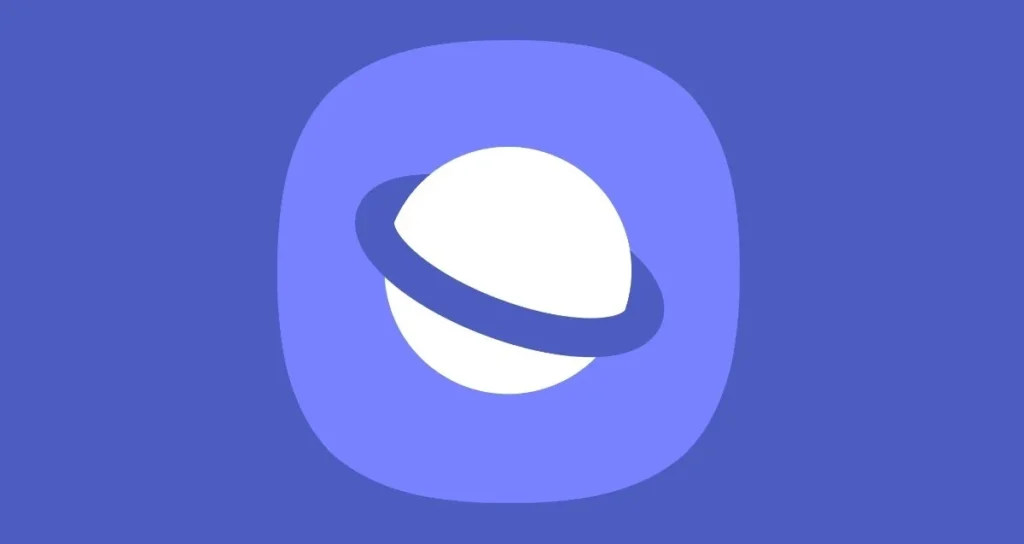
Here are the most used browsers today. Below I leave you a broader list of other web browsers that exist, with their official website, so that if you wish, you can continue expanding your knowledge about them.
Mozilla Firefox:
https://www.mozilla.org/
Microsoft Edge:
https://www.microsoft.com/es-es/edge
Google Chrome:
https://www.google.com/chrome/
Apple Safari: (Exclusivo para Mac)
https://www.apple.com/safari/
Opera:
https://www.opera.com/
Brave:
https://brave.com/
Vivaldi:
https://vivaldi.com/
UC Browser:
https://www.ucweb.com/
Tor Browser:
https://www.torproject.org/
Yandex Browser:
https://browser.yandex.com/
Epic Privacy Browser:
https://www.epicbrowser.com/
Maxthon:
https://www.maxthon.com/
Internet Explorer:
https://support.microsoft.com/en-us/help/17621/internet-explorer-downloads
Konqueror:
https://konqueror.org/
Pale Moon:
https://www.palemoon.org/
SeaMonkey:
https://www.seamonkey-project.org/
Avant Browser:
https://www.avantbrowser.com/
Coowon:
https://www.coowon.com/
SRWare Iron:
https://www.srware.net/en/software_srware_iron_chrome_vs_iron.php
Bibliography
https://www.avast.com/es-es/c-what-is-a-web-browser
https://www.euskadi.eus/navegadores-web/web01-a2wz/es/
https://www.mozilla.org/es-ES/firefox/browsers/what-is-a-browser/
https://www.arimetrics.com/glosario-digital/navegador
https://es.wikipedia.org/wiki/Navegador_web
https://www.samsung.com/es/support/apps-services/que-es-samsung-internet/






